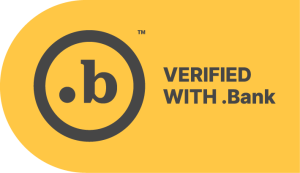Have you ever wondered how lenders determine the interest rate on your credit card or car loan? Well, it all starts with the prime interest rate—the baseline for borrowers least likely to default.
The prime rate—often referred to as just “prime” in financial services circles—can figure into adjustable-rate mortgages, home equity lines of credit (HELOCs) and loans guaranteed by the U.S. Small Business Administration. As you can see, the prime rate is a consideration for banks and credit unions when pricing their products. Another consideration many banks use is the U.S. Treasury rate.
In the United States, the Federal Reserve is most often associated with interest rates. The Fed is a system of government-run banks that steers national monetary policy, regulates privately held banks and provides financial stability. The Fed sets the federal funds rate, which is the interest rate banks charge each other for quick-turnaround loans. The fed funds rate is the central interest rate in the U.S. financial market, and it directly influences the prime rate.
So what exactly is the prime interest rate, who sets it and what are some examples of how it affects you? Our primer on the prime rate will answer all these questions and then some.
What is the prime rate?
What’s the best way to explain the prime rate? In plain terms, it’s the lowest interest rate banks and lenders offer to their most creditworthy customers. Think large corporations and high-net-worth individuals—an exclusive group that might include the likes of tech giant Apple and Amazon founder Jeff Bezos.
The prime rate is typically about 3% higher than the fed funds rate. In September 2021, the fed funds rate was .08%, and the prime rate was 3.25%. Unless you’re an extremely wealthy borrower with impeccable credit and liquid assets, lenders aren’t likely to extend you a loan at the prime rate. Chalk it up to managing risk.
For the majority of customers, banks tack additional basis points on to the prime rate. The number of points depends on the type and term of the loan, as well as your credit score. Each basis point represents one one-hundredth of a percentage point, so 100 basis points equals 1 percent in additional interest.
The first prime interest rate was recorded at 1.75% in 1947. Over the decades, it has remained fairly stable minus a steep spike in the early 1980s when the Fed raised the fed funds rate to 20% to counter skyrocketing inflation. The highest it’s been in recent history is 5.5% in December 2018.
Who sets the prime rate?
The government sets the fed funds rate, so it must set the prime rate, too, right? Nope. Good guess, but the banks themselves actually determine the prime rate. It’s essentially an agreed-upon rate by the majority of U.S. lending institutions.
The Wall Street Journal defines the prime rate as the base rate on corporate loans posted by at least 70% of the 10 largest U.S. banks. The paper publishes the prime daily and recalculates it when at least seven of those banks have raised or lowered the rate.
After sitting at 3.25% from late 2008 to late 2015, the prime rate has crept up in recent years. However, the intermittent increases have been gradual—rarely more than 25 basis points. At least that was the case until the COVID-19 pandemic hit in early 2020. The prime rate dropped from 4.75% in October 2019 to 4.25% in early March 2020. And less than two weeks later, it dropped another full percentage point to 3.25% when the Fed aggressively cut the fed funds rate.
Rising inflation may prompt the Fed to raise interest rates in 2022. If that happens, the prime rate will surely mirror the increase.
How does the prime rate affect you?
If you have a credit card or borrowed money from a bank to purchase a home or car, the prime rate was an underlying factor in the interest rate you paid. Interest rates for fixed-rate loans are tied to prime, and interest on adjustable-rate loans actually move up or down based on the prime rate or the U.S. Treasury rate.
Credit cards
Most credit cards have variable interest rates that fluctuate between minimum and maximum limits stipulated in the cardholder agreement. As noted, banks amend the prime rate when the government alters the fed funds rate. You can see how the ripple effect works. Rising inflation leads to higher interest rates that are eventually passed along to you, the consumer. Conversely, rate cuts will lead to a welcome drop in your card’s APR.
Mortgage loans
As with credit cards, interest rates for adjustable-rate mortgages (ARM) shift in line with prime or U.S. Treasuries. Shorter-term ARMs are more likely to feel the effects of prime interest rate ebbs and flows. The interest rate on those home loans reset more frequently, which means there are more opportunities for the prime rate to come into play.
Home equity lines of credit
The prime rate also serves as the index for HELOCs, which allow you to borrow against the equity you’ve built in your home. Banks will often advertise HELOC rates as prime plus X%. Again, if the prime interest rate rises or falls, you’ll see that reflected in the variable interest rate attached to your line of credit.
Car loans
Terminology surrounding the prime interest rate also translates to creditworthiness. As such, lenders assign categories to car buyers to determine the spread between the prime rate and the actual interest rate on their auto loan. The better your credit score—combined with other factors—the better rate you’ll be offered.
With the prime interest rate at its lowest point since October 2015, now’s a great time to be a borrower with good credit. If you’re looking to buy a new home or car, contact Community Point Bank today to find out if you qualify for the prime lending rate.
|
Recent Prime Rate History |
|
|
Mar. 16, 2020 |
3.25% |
|
Mar. 4, 2020 |
4.25% |
|
Oct. 31, 2019 |
4.75% |
|
Sept. 19, 2019 |
5.00% |
|
Aug. 1, 2019 |
5.25% |
|
Dec. 20, 2018 |
5.50% |
|
Sept. 27, 2018 |
5.25% |
|
June 14, 2018 |
5.00% |
|
Mar. 22, 2018 |
4.75% |
|
Dec. 14, 2017 |
4.50% |
|
June 15, 2017 |
4.25% |
|
Mar. 16, 2017 |
4.00% |
|
Dec. 15, 2016 |
3.75% |
|
Dec. 17, 2015 |
3.50% |




